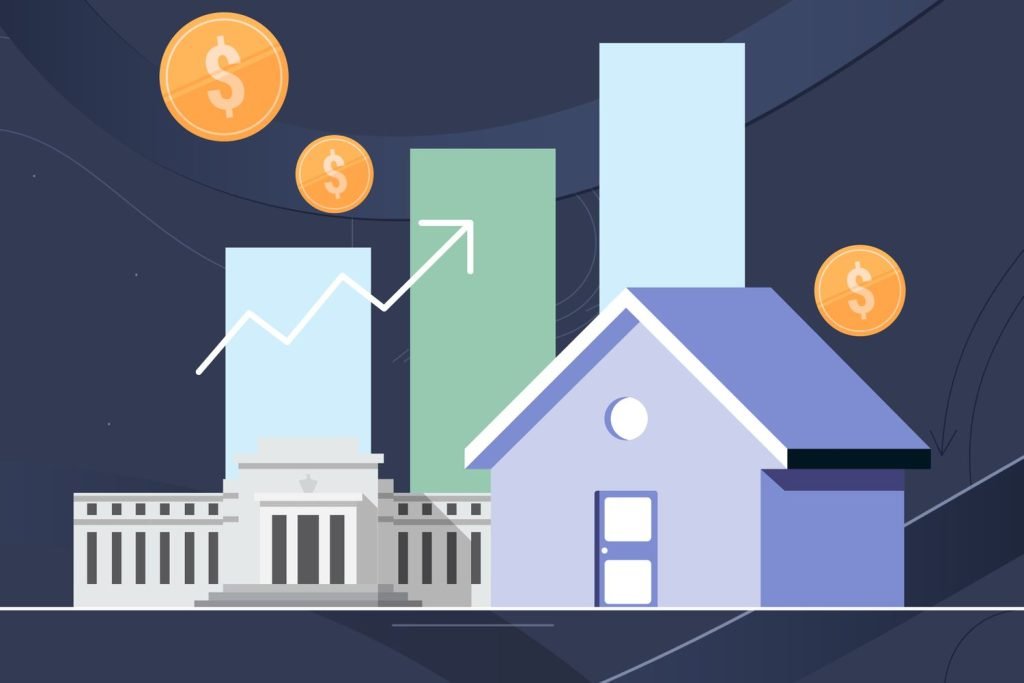
As we cast our gaze toward the horizon of 2024, the real estate market buzzes with speculation and anticipation. One of the most pressing questions for homeowners, potential buyers, and investors is the trajectory of mortgage rates. Will we see a downturn that opens up more opportunities for buyers and those looking to refinance? In a manner reminiscent of Neil Patel’s insightful analysis and captivating narrative, let’s delve into the factors that could signal whether decreases in mortgage rates are on the radar for 2024.
Economic Indicators: The Compass for Mortgage Rates
To predict the future of mortgage rates, it’s crucial to first understand the economic landscape. Economic indicators such as inflation, GDP growth, unemployment rates, and consumer spending offer valuable insights into the overall health of the economy and its potential impact on mortgage rates. Historically, high inflation has led central banks to increase interest rates to stabilize the economy, often resulting in higher mortgage rates. Conversely, in times of economic downturn, central banks may lower interest rates to encourage borrowing and investment, potentially leading to lower mortgage rates. The behavior of these indicators throughout 2023 will be critical in forecasting the direction of mortgage rates in 2024.
The Federal Reserve’s Role: Steering the Ship
In the United States, the Federal Reserve (the Fed) plays a pivotal role in shaping the direction of mortgage rates through its monetary policy decisions. By adjusting the federal funds rate, the Fed influences the cost of borrowing money across the economy. If the Fed adopts a dovish stance due to controlled inflation or seeks to stimulate economic growth, we could witness a softening of mortgage rates. Observers will closely watch the Fed’s policy outlook and statements for clues about future rate movements as we approach 2024.
Global Economic Dynamics: The Bigger Picture
In today’s interconnected global economy, events beyond our borders can significantly influence domestic mortgage rates. International financial crises, geopolitical tensions, and shifts in global trade policies can affect investor confidence and bond markets, which in turn impact mortgage rates. For example, if global uncertainties prompt investors to seek the safety of U.S. Treasury bonds, this could result in lower mortgage rates. Keeping an eye on global economic trends is thus essential for accurately predicting mortgage rates in 2024.
Housing Market Dynamics: Supply Meets Demand
The interplay between supply and demand in the housing market is another crucial factor in determining mortgage rates. An upsurge in homebuying activity, driven by demographic shifts or changes in consumer preferences, can lead to higher mortgage rates as lenders respond to increased demand. Conversely, an oversupply of homes or reduced buyer interest might push lenders to lower mortgage rates to attract borrowers. Analyzing housing market trends will be key to understanding potential mortgage rate movements in 2024.
Technological Advancements: Shaping the Future
The mortgage industry’s ongoing technological evolution could also influence future mortgage rate trends. Fintech innovations are streamlining the mortgage process, reducing operational costs for lenders, and increasing competition within the industry. This enhanced competition may lead to more favorable mortgage rates for consumers as lenders strive to attract business. Monitoring the progress of technological advancements and their adoption in the mortgage sector will be crucial for anticipating mortgage rate trends in 2024.
Regulatory Changes: A Potential Catalyst
The regulatory environment surrounding lending practices and the housing market can significantly impact mortgage rates. New legislation aimed at encouraging homeownership or altering the financial regulatory framework could affect the cost of lending and, subsequently, mortgage rates. Paying close attention to upcoming regulatory changes will be vital for those looking to forecast mortgage rate trends in the coming year.
Consumer Behavior: The Demand-Side Equation
Lastly, consumer sentiment and behavior—reflected in mortgage application rates and refinancing activity—can offer insights into the future direction of mortgage rates. A surge in refinancing or an increase in new mortgage applications can signal consumer confidence and potentially impact the rates lenders are willing to offer. Tracking shifts in consumer behavior will provide additional perspectives on where mortgage rates might be headed in 2024.
Conclusion: Navigating the Waters of Mortgage Rates
As we navigate toward 2024, the potential for decreases in mortgage rates hinges on a confluence of economic, policy, and market factors. From the guiding signals of economic indicators and the Federal Reserve’s monetary policy to the influence of global economic events and the dynamics of the housing market, each element plays a pivotal role in shaping the future of mortgage rates. The impact of technological advancements and regulatory changes, coupled with insights from consumer behavior, adds layers of complexity to mortgage rate predictions.
Emulating Neil Patel’s approach of blending data-driven analysis with engaging storytelling, it’s clear that the question of whether mortgage rates will decrease in 2024 involves a multifaceted examination of the influencing factors. For stakeholders in the real estate market, staying informed, agile, and prepared to adapt to changing conditions will be key to navigating the uncertainties of the mortgage landscape.
In sum, while the exact trajectory of mortgage rates in 2024 remains uncertain, our exploration of the contributing factors equips us with the insights needed to prepare for the possibilities that lie ahead. By arming ourselves with knowledge and remaining attuned to the evolving economic and regulatory environment, we can approach the future of mortgage rates with confidence, ready to make informed decisions in a shifting market.



